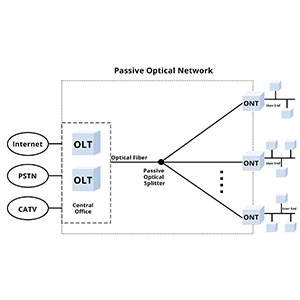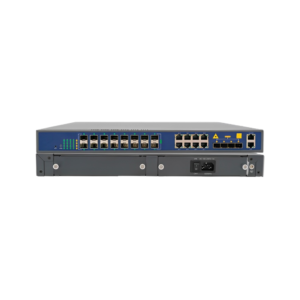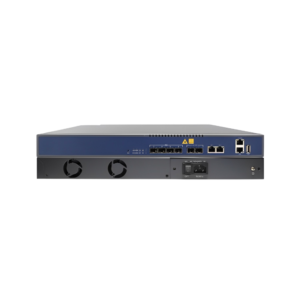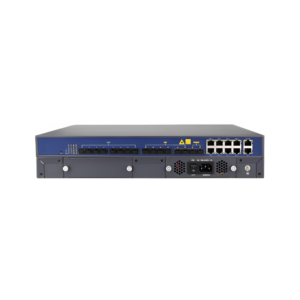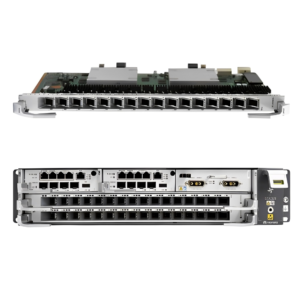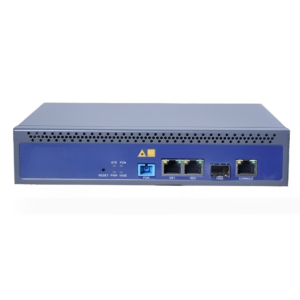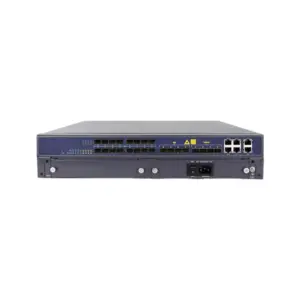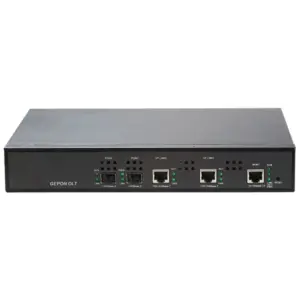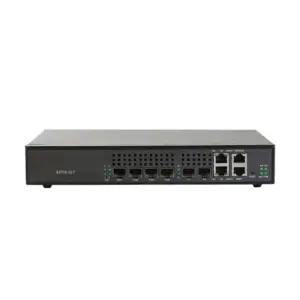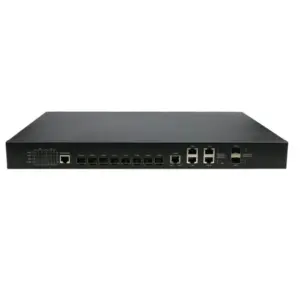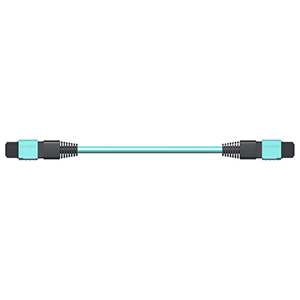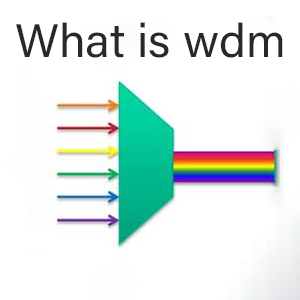Hello everyone! FTTH network is undoubtedly the leading technology in today’s optical access field. As the core equipment of FTTH network, OLT and ONT play a key role in realizing high-speed and high-quality optical access services. Today I am very happy to explain in detail the technical characteristics of OLT and ONT, as well as the key mechanisms for their cooperative work in FTTH networks. By fully understanding the functions and applications of OLT and ONT, I believe you will be able to choose the optimal equipment combination for your FTTH network to ensure network stability and excellent user experience.
OLT technology overview
Let me introduce you to OLT (Optical Line Terminal) technology:
Basic functions and features of OLT:
- OLT is the core equipment in the FTTH optical fiber access network.
- The main functions include: signal sending and receiving, business processing, user management, etc.
- It has the characteristics of high density, high reliability and low power consumption.
- Supports multiple PON interface standards such as GPON, XG-PON, and XGS-PON.
The core role and key technical indicators of OLT in FTTH networks:
- As the central node of the optical fiber network, OLT is responsible for providing access services to user terminal ONTs.
- Unified management and control of user services can be achieved through OLT.
- Key technical indicators include: port density, bandwidth capacity, power consumption efficiency, etc.
- These indicators directly affect the OLT’s carrying capacity and operating costs in the network.
The development history of OLT equipment and its application in the industry:
- OLT was originally developed by telecom operators and is mainly used in FTTH optical fiber access networks.
- With the development of PON standards such as GPON and XG-PON, OLT equipment continues to evolve and upgrade.
- Currently, OLT has been widely used in FTTH deployments around the world and is a key equipment for optical fiber access networks.
- OLT plays an important role in many fields such as telecommunications, cable TV, and enterprises.
In general, OLT, as the core control device of the FTTH network, shoulders key responsibilities such as providing access services to users and unified management of services. With the continuous evolution of PON technology, OLT equipment is also constantly upgraded and optimized to meet the future needs of higher speed and larger capacity optical fiber networks. The application of OLT in the field of optical fiber access has been very extensive and mature. If you want to learn more about what OLT is, please read the article What is olt: The Definitive Guide to the Best of 2024
ONT technology overview
Let me introduce you to ONT (Optical Network Terminal) technology:
Basic concepts of ONT and its position in FTTH:
- ONT is the user terminal equipment in the FTTH optical fiber access network.
- Located on the user side of the optical fiber network, connected to the user’s home or office.
- Responsible for converting optical signals into electrical signals and providing business access.
- It is the key device connecting users and the network in the FTTH network.
Key technical features of ONT providing service access on the user side:
- Supports access to multiple service types such as voice, video, and data.
- Usually has multiple physical interfaces such as Ethernet, POTS, CATV, etc.
- Adopt advanced uplink coding, downlink demodulation and other technologies to improve transmission performance.
- Has value-added functions such as business quality assurance and security protection.
Main types of ONT devices and their applicable scenarios:
- Home ONT: Suitable for FTTH access for ordinary home users.
- Common interfaces include Ethernet, POTS, CATV, etc.
- Enterprise ONT: Suitable for FTTH access for enterprise and industry users.
- Provide more business interfaces and support higher bandwidth.
- Centralized ONT: suitable for large communities, office buildings and other scenarios.
- Adopt centralized deployment to improve deployment efficiency.
Therefore, ONT is an indispensable user terminal equipment in the FTTH optical fiber access network, and is responsible for the key function of converting optical signals into services required by users. According to different user groups and application scenarios, ONT equipment also has various types and characteristics, providing flexible and reliable access services for end users. If you want to learn more about what ONT is, please refer to the article What is ont: The Definitive Guide to the Best of 2024
How OLT and ONT work together
Let me introduce to you in detail the cooperative working mechanism of OLT (Optical Line Terminal) and ONT (Optical Network Terminal) in FTTH network:
The interactive relationship between OLT and ONT in FTTH network:
- As the core equipment of the optical fiber access network, OLT is responsible for providing unified management and control of the access network.
- As a terminal device on the user side, ONT receives OLT control instructions and provides service access.
- OLT and ONT communicate bidirectionally through optical fiber links to realize end-to-end management of the optical access network.
Data interaction process and protocol cooperation between OLT and ONT:
- OLT and ONT interact based on PON standard (such as GPON, XGS-PON, etc.) protocols.
- Includes ONT registration and authentication, service configuration delivery, user status monitoring and other processes.
- Use technologies such as Time Division Multiplexing (TDM) and Wavelength Division Multiplexing (WDM) to achieve uplink and downlink data transmission.
- Optimize network resource utilization through mechanisms such as dynamic bandwidth allocation (DBA).
Key technical points of OLT and ONT in realizing efficient optical access:
- OLT must have the characteristics of high density, low power consumption, and high reliability to support large-scale user access.
- ONT needs to meet the requirements of functional integration, business flexibility, easy deployment, etc., and adapt to user-side applications.
- Standardization and interoperability need to be achieved between OLT and ONT to ensure unified management and control of the network.
- Key physical layer technologies such as optical fiber transmission and interface adaptation are also the basis for ensuring efficient access.
From the above, it is not difficult to see that OLT and ONT, as core equipment in the FTTH network, realize end-to-end management and control of the optical access network through standardized protocol interaction. The close cooperation between the two is the key to achieving efficient and reliable optical access service delivery. If you want to learn more about how OLT and ONT work together, please refer to the article OLT vs ONT: Comparison Guide to the Best Differences in 2024
How to select and deploy OLT and ONT
Let me introduce to you the selection and deployment considerations of OLT and ONT equipment:
Main considerations for selecting OLT and ONT equipment:
- Supported PON standards and interface types
- Port density, bandwidth capacity, power consumption and other performance indicators
- Reliability, security, easy maintenance and other features
- Compatibility and interoperability with existing networks
- Economic factors such as equipment costs and operating costs
Key steps and precautions for OLT and ONT deployment:
- OLT deployment:
- Plan the OLT installation location reasonably, taking into account factors such as power and space
- Determine the number of OLT ports based on coverage and number of users
- Test the connection and interoperability between OLT and upstream and downstream equipment
- ONT deployment:
- Choose the appropriate ONT type and interface based on user needs
- Simplify ONT installation and debugging and improve user experience
- Optimize the placement of ONTs to ensure fiber transmission quality
Maintenance and management measures for OLT and ONT in FTTH network:
- Establish a unified management platform for OLT and ONT
- Real-time monitoring of the operating status of OLT and ONT
- Discover and handle faults in a timely manner to ensure network reliability
- Regularly optimize network parameters to improve transmission performance
- Ensure software system security and prevent network attacks
Therefore, the selection and deployment of OLT and ONT equipment require comprehensive consideration of technical, economic, operation and maintenance and other factors. In actual deployment, key steps must be strictly controlled and an effective maintenance and management mechanism must be established to ensure efficient and stable operation of the FTTH network.
Summary
In summary, OLT and ONT, as key components of FTTH networks, play an indispensable role in realizing high-speed optical access services. OLT is responsible for providing powerful and stable access control on the network side, while ONT provides diversified service access capabilities on the user side. Through precise collaborative work, the two jointly build a solid foundation for the FTTH network.
We provide professional OLT and ONT equipment and network planning services, and have an experienced technical team to provide you with considerate guidance at any time. If you have any questions during the FTTH network construction and maintenance process, please feel free to contact us for communication.
OLT and ONT FAQ
An OLT is a device used in passive optical networks (PONs) to transmit and receive optical signals to and from Optical Network Units (ONUs) or Optical Network Terminals (ONTs) located at subscriber premises.
An ONT is a device installed at a subscriber’s location in a passive optical network (PON) to convert optical signals into electrical signals for communication with end-user devices such as computers, phones, and routers.
The OLT serves as the central point in a PON architecture, managing communication with multiple ONUs/ONTs, allocating bandwidth, and controlling data transmission between the service provider’s network and subscriber premises.
An ONT performs several functions, including converting optical signals to electrical signals, providing interfaces for connecting user devices (e.g., Ethernet ports, phone jacks), and managing the communication between the subscriber and the service provider’s network.
Data is transmitted between an OLT and an ONT using optical signals over fiber optic cables. The OLT sends downstream data (from the network to the subscriber) and receives upstream data (from the subscriber to the network) via the PON.
OLTs and ONTs can deliver various services, including high-speed internet access (e.g., GPON, XGS-PON), voice over IP (VoIP), IPTV (Internet Protocol Television), video streaming, cloud services, and enterprise connectivity.
Yes, an OLT can serve multiple ONTs/ONUs simultaneously, allowing service providers to connect numerous subscribers to their network infrastructure and deliver services efficiently.
When deploying OLTs and ONTs, factors such as network capacity, coverage area, fiber optic infrastructure, service provisioning, compatibility with subscriber devices, and scalability need to be considered.
Yes, OLTs and ONTs are standardized under various specifications and protocols, such as ITU-T G.984 (for GPON), ITU-T G.988 (for XGS-PON), IEEE 802.3 (Ethernet standards), and SIP (Session Initiation Protocol) for VoIP services.
OLTs and ONTs are commonly used by telecommunications companies, internet service providers (ISPs), and network operators to deploy fiber-to-the-home (FTTH), fiber-to-the-building (FTTB), and fiber-to-the-premises (FTTP) services, delivering high-speed broadband connectivity to residential, commercial, and enterprise customers.

